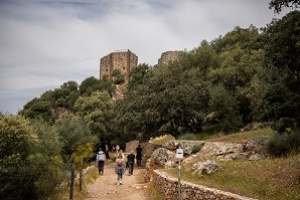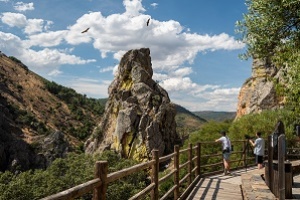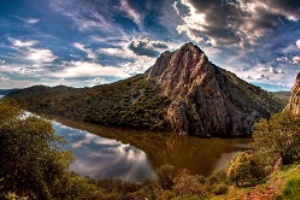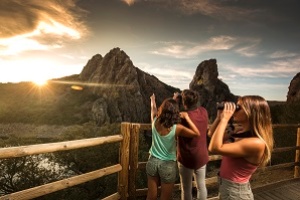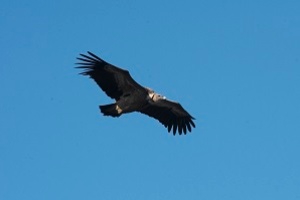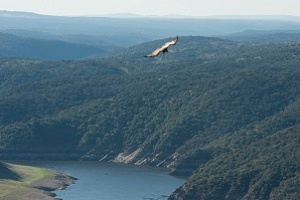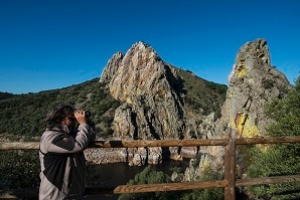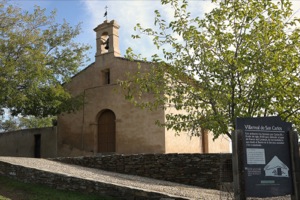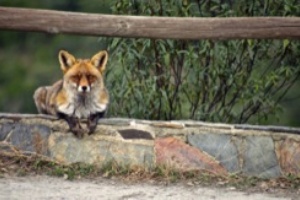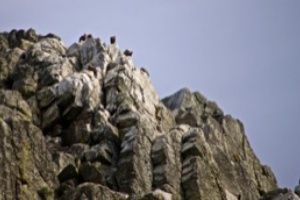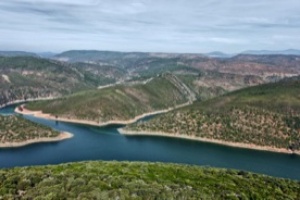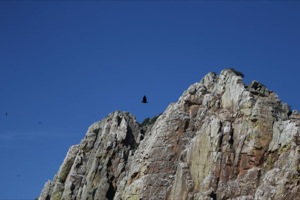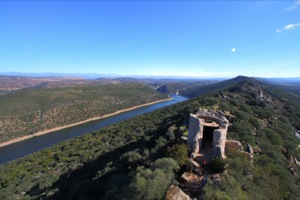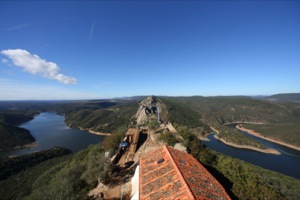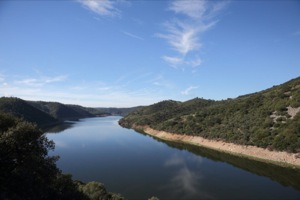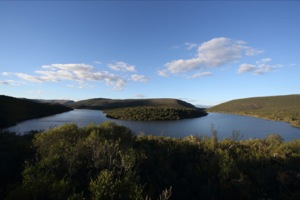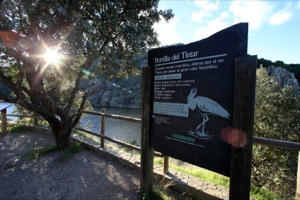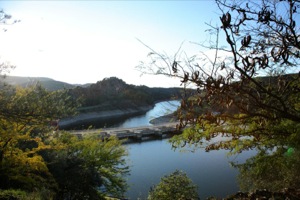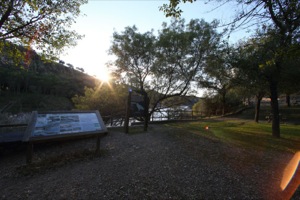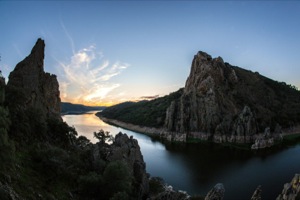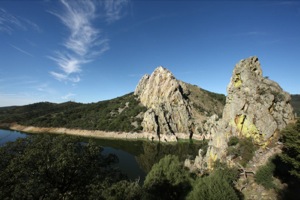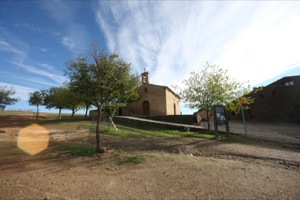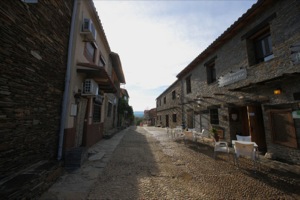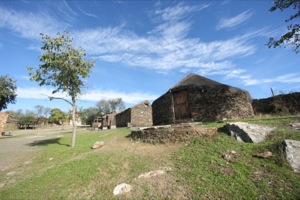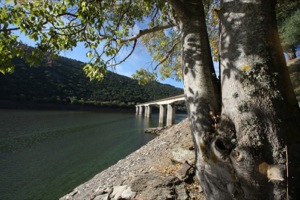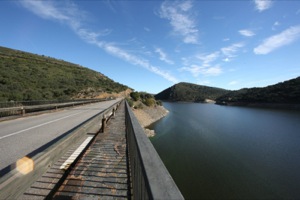Nature
Monfragüe National Park
The Monfragüe National Park is a wonderful place to visit for both ornithology and Mediterranean flora.
- Explore
- Monfragüe National Park
Nature
Nature divided by the Tagus
Location and Contact:
- Contact person: Villareal de San Carlos reception and information centre
- Tel.:+34 927 199 134
- Fax: +34 927 198 212
- Email: info.monfrague@juntaex.es
- Website address: extremambiente.gobex.es/index.php?option=com_content&view=article&id=228&Itemid=77
- Website address: www.magrama.gob.es/es/red-parques-nacionales/nuestros-parques/monfrague/
- Facebook: https://www.facebook.com/Monfrag%C3%BCe-Parque-Nacional-y-Reserva-de-la-Biosfera-1383444755233441/
- Twitter: https://twitter.com/MonfraguePN
- Opening times
Monday to Friday: 9:30am-7:00pm (summer)
Monday to Friday: 9:30am-6:00pm (winter)
Saturdays, Sundays and Public Holidays:
9:30am-7:00pm (summer)
9:00am-6:00pm (winter)
-
The Monfragüe National Park is a wonderful place to visit for both ornithology and Mediterranean flora.
Located in the middle of an imaginary triangle formed by Plasencia, Trujillo and Navalmoral de la Mata, and with the Tagus river running through it, the Monfragüe National Park is unique; it was declared a Biosphere Reserve by UNESCO in 2003.
Monfragüe takes its name from the Romans, who called it Mons Fragorum, the fragmented mountain. Difficult to access and covered by scrubland, it is the largest and best preserved stretch of Mediterranean mountain landscape in the world. The wild mountains delimiting the Tagus and Tiétar valleys are home to oak forests and Mediterranean trees and shrubs, boulders, reservoirs and streams; it is a typically Iberian landscape that provides a home for the Park's incredibly diverse flora and fauna.
Cork oaks, Portuguese oaks, wild olives and holm oak trees are surrounded by shrubs more fitted to drier climes. Together they paint a canvas in infinite shades of green and brown at the most popular birdwatching spot for visitors, the Salto del Gitano. So don't forget to programme a break in your schedule to admire the black storks, vultures, Egyptian vultures and imperial eagles -just a few of the many birds that nest in the cliffs and trees of Monfragüe.
And birds are just a few of the 208 species of vertebrates that live in this natural sanctuary. Deer, common genets, badgers, lynx, wildcats, otters, snakes, tortoises… these are just some of the species living in this area of Upper Extremadura.
The Park is also the site of Monfragüe Castle, an Arab construction, although now almost nothing remains of the original. According to legend, this was the home of princess Noeima, who wanders the mountains in eternal punishment by her father for falling in love with a Christian and giving him information on how to enter the castle. People have left many other marks on Monfragüe over the ages, with many prehistoric cave paintings remaining. Another important historic and artistic artefact is the image of the Christ of Victory, known as the Cristo de Serradilla, which is still venerated in the area.
Villarreal de San Carlos is the only town in the Park. It has a Visitors' Centre, a Nature Information Centre and a Naturalized Animal Centre, together with accommodation, refreshments and public services. The town also hosts the annual Feria Internacional de Turismo Ornitológico de Extremadura (FIO - Extremadura International Ornithology Tourism Fair).
In Malpartida de Plasencia, one of the entrance gates to this protected area, The Monfragüe National Park North Visitor Information Centre is located.
INTERPRETATION CENTRE BROCHURE
As well as enjoying some of the routes through the park, make sure you also visit one of its most spectacular spots, the Salto del Gitano. This is a 300 metre cliff, an immense quartzite outcrop rearing up above the Tagus river. And if you want to break your journey, you can relax at the Fuente de los Tres Caños or the Fuente del Francés drinking fountains.
-
Type:
- Park National
Accessibility:
- Disabled access
- Accessible car park
- Accessible elevator
- Accessible facilities and common areas
- Adapted educational materials
- Access ramps
- Accessible restaurant
- Adapted route for disabled people
- Signs in Braille
Services:
- Rural accommodation
- Parking
- Camping
- Fountains for Public Use
- Outreach Material
- picnic areas
- Interpretive panels
- Guided Tours
Gallery:
More suggestions
-
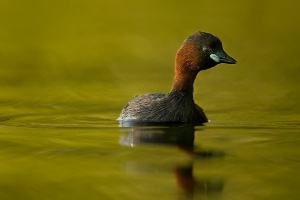
Hundreds of birds to watch first hand
The excellent state of conservation of the habitat of the birds turns Extremadura into a true bird watching paradise.
-
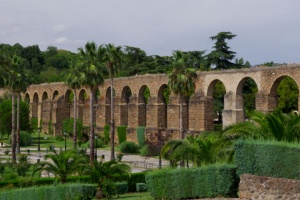
Plasencia — where culture and nature go hand in hand
The historical heritage of Plasencia holds its own in terms of the cultural interest of the other towns and cities of Extremadura, but with the added attraction of its parks.
-
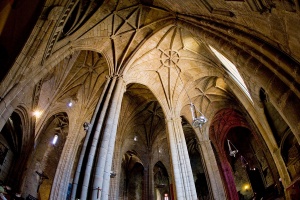
Monfragüe Railway Village
The residential installations of the railway workers who brought modernity to the region in the form of trains can be found in the Monfragüe Biosphere Reserve.
-

Monfragüe Y Las Dehesas Del Entorno Special Protection Area (SPA) for Birds
The many and diverse ecosystems that make up the Monfragüe Y Las Dehesas Del Entorno Special Protection Area for Birds have given rise to a wide variety of wildlife in this protected area of Cáceres, the second largest in Extremadura.
-
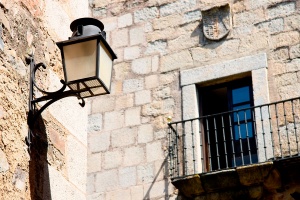
Torrejón el Rubio
-

Villarreal de San Carlos
The hamlet of Villarreal de San Carlos, belonging to Serradilla, enjoys a privileged location in an incredibly beautiful spot.
-
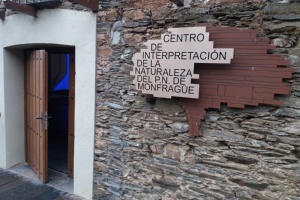
Monfragüe National Park Nature Interpretation Centre
The Interpretation Centre of Nature offers the opportunity to discover Monfragüe in an original way and takes one through three different exhibition rooms.
-
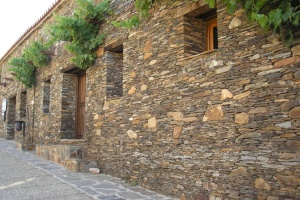
Monfragüe National Park multiple use Centre
The Multiple-Use Centre has a panoramic audiovisual montage and a room for temporary exhibitions.
-
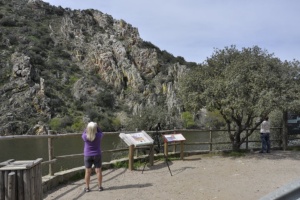
Mirador de la Portilla del Tiétar (Viewpoint)
-
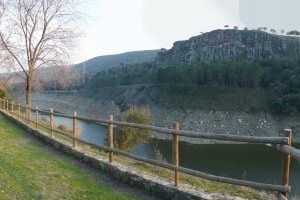
Mirador de La Tajadilla (Viewpoint)
-
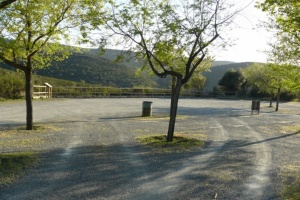
Mirador de La Báscula (Viewpoint)
-
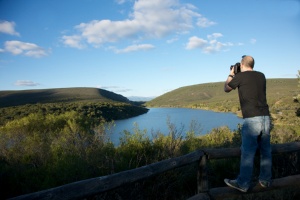
Mirador de La Higuerilla (Viewpoint)


